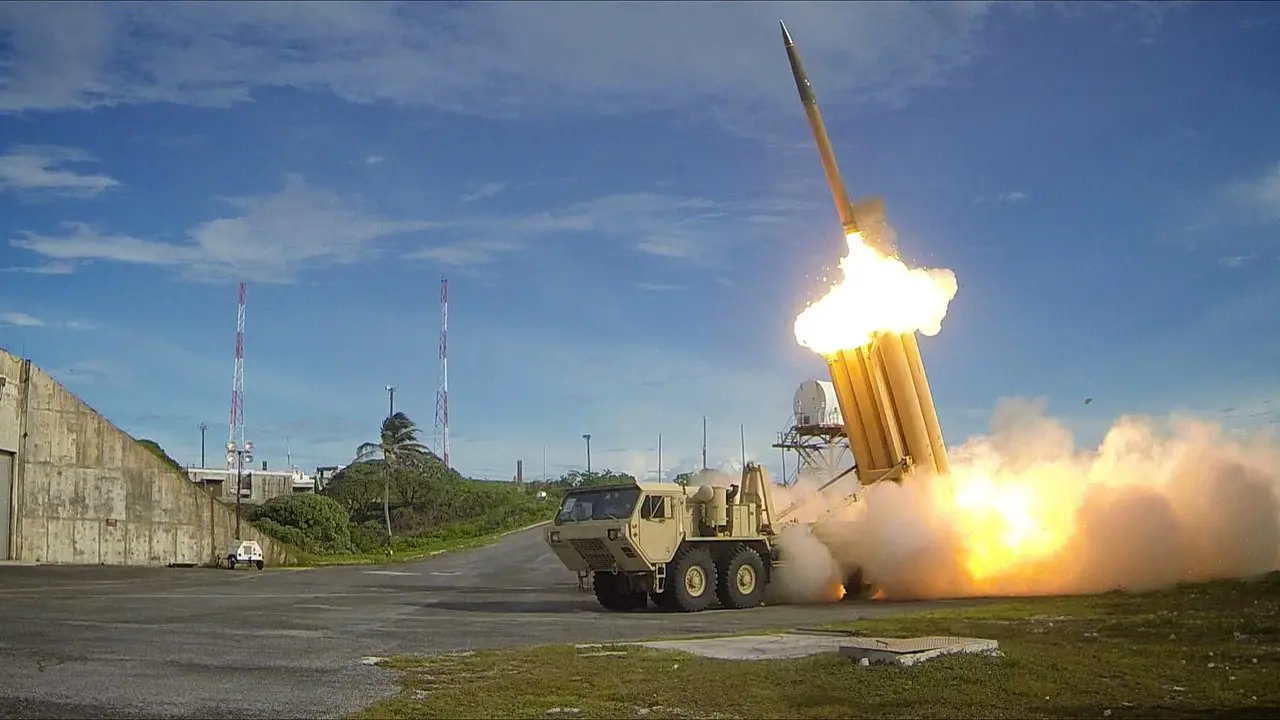Lockheed Martin Corp. Missiles and Fire Control, Dallas, Texas, is being awarded a $180,361,391 modification to a previously-awarded contract for the production of Terminal High Altitude Area Defense (THAAD) Interceptors and associated one-shot devices to support the U.S. government. The THAAD Interceptors and associated one-shot devices will be procured under fixed-price incentive (firm target) contract line items. The value of this contract is increased from $8,141,500,094 to $8,321,861,484. The work will be expected completion date of March 1, 2028. Fiscal 2023 U.S. government procurement funds in the amount of $180,361,391 are being obligated at time of award. The Missile Defense Agency, Huntsville, Alabama, is the contracting activity.
Terminal High Altitude Area Defense (THAAD), formerly Theater High Altitude Area Defense, is an American anti-ballistic missile defense system designed to shoot down short, medium, and intermediate-range ballistic missiles in their terminal phase (descent or reentry) by intercepting with a hit-to-kill approach. The THAAD interceptor carries no warhead, instead relying on its kinetic energy of impact to destroy the incoming missile. THAAD was originally scheduled for deployment in 2012, but initial deployment took place in May 2008. THAAD has been deployed in the United Arab Emirates, Israel, Romania, and South Korea. On 17 January 2022, THAAD made its first operational interception, of an incoming medium-range ballistic missile in the UAE.

THAAD was developed after the experience of Iraq’s Scud missile attacks during the Gulf War in 1991. The THAAD program benefited from results of previous missile defense efforts like High Endoatmospheric Defense Interceptor (HEDI) and the Kinetic Kill Vehicle Integrated Technology Experiment (KITE). In September 1992, the US Army selected Lockheed (now Lockheed Martin) as prime contractor for THAAD development. Prior to development of a physical prototype, the Aero-Optical Effect (AOE) software code was developed to validate the intended operational profile of Lockheed’s proposed design. The vulnerability and lethality analyses of THAAD have been conducted by the U.S. Army Research Laboratory (ARL).
Sometimes called Kinetic Kill technology, the THAAD missile destroys missiles by colliding with them, using hit-to-kill technology, like the MIM-104 Patriot PAC-3 (although the PAC-3 also contains a small explosive warhead). This is unlike the Patriot PAC-2 which carried only an explosive warhead detonated using a proximity fuze. Although the actual figures are classified, THAAD missiles have an estimated range of 125 miles (200 km), and can reach an altitude of 93 miles (150 km). A THAAD battery consists of at least six[41] launcher vehicles, each equipped with eight missiles, with two mobile tactical operations centers (TOCs) and the AN/TPY-2 ground-based radar (GBR); the U.S. Army plans to field at least six THAAD batteries, at a purchase cost of US$800 million per battery.
















